There Euphorbia trigonaalso known as euphorbia cacti or African milk plantis a charming and easy-to-grow succulent plant that is gaining popularity among indoor and garden plant enthusiasts. Native to the arid regions of West Africa, this plant has a distinctive shape and unique appearance, making it a stunning addition to any plant collection.
In this article, we’ll explore the cultivation and care needed to keep this plant healthy. From choosing the ideal soil to proper light exposure and watering, we’ll learn everything you need to know to ensure vigorous growth of this succulent plant.
We will start with an overview of the history and characteristics of Euphorbia trigona, to better understand its natural environment and its specific needs.
How is the Euphorbia trigona plant made?
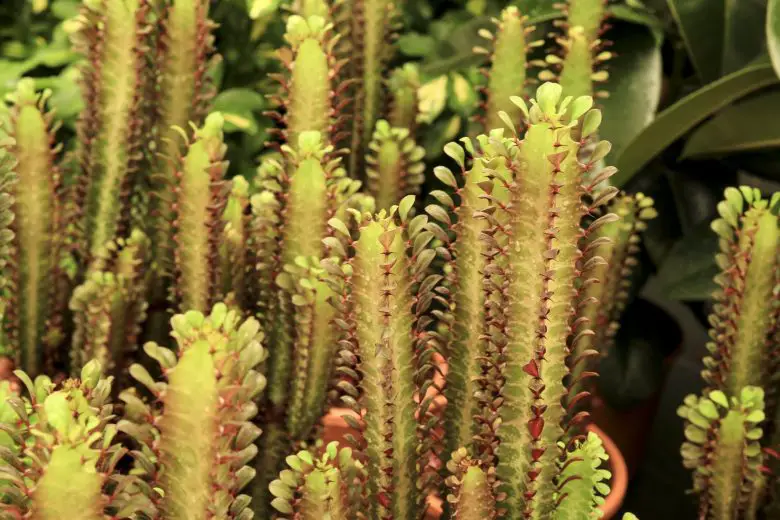
Euphorbia trigona rubra
Euphorbia trigona is a succulent plant belonging to the Euphorbiaceae family. It is native to West Africa, especially Cameroon and Togo. One of the distinguishing features of the plant is its unique shape. It grows upright, developing one or more central triangular stems that can reach a considerable height. In fact, in nature, the plant reaches 2-3 m in height. The main stem is heavily branched at the top and studded with pointed corners which give the plant an interesting, geometric look.
The leaves are small and oval and come to life from the upper spines. The thorns, however, long and tapered, develop along the edges of the corner of the stem. These spines are dark green in color and may have tips that are a lighter tone. The spines contain a white milky sap, hence the name African milk plant. It is advised to handle this sap with caution, as it can be irritating to skin and eyes.
Euphorbia trigona flowers during the hottest months of the year. The flowers are small and yellowish-green, grouped in terminal inflorescences. While they aren’t the focal point of the plant, they do add a pop of color and interest to its overall presence.
In cultivation, the Euphorbia trigona rubra variety is much appreciated, which develops reddish stems that are even more decorative than the type species.
How to cure Euphorbia trigona?
In general, Euphorbia trigona is more suitable for growing in pots than in the ground in many Italian regions, especially in areas with cold winters or more humid climates. This plant is native to tropical regions and thrives in conditions of direct sunlight and warmth.
Growing the plant in a pot has several advantages. First, it allows you to better control growing conditions, including soil quality and drainage. Furthermore, it is a plant that needs to be protected from frost, so growing it in a pot gives the possibility of moving it easily indoors during the coldest periods of the year.
However, in Italian regions with a warmer and milder climate, especially in the southern coastal areas, Euphorbia trigona could be successfully grown in the ground. In these areas, where winter temperatures do not drop below zero and the climate is more similar to the conditions of the regions of origin of the plant, it is possible to grow it directly in the ground.
Sunlight exposure is also important to consider. The plant requires at least 6-8 hours of direct sunlight per day for healthy growth. Therefore, if your garden offers good exposure, you might consider growing it in the ground.
At home, what are the ideal environmental conditions for Euphorbia trigona?
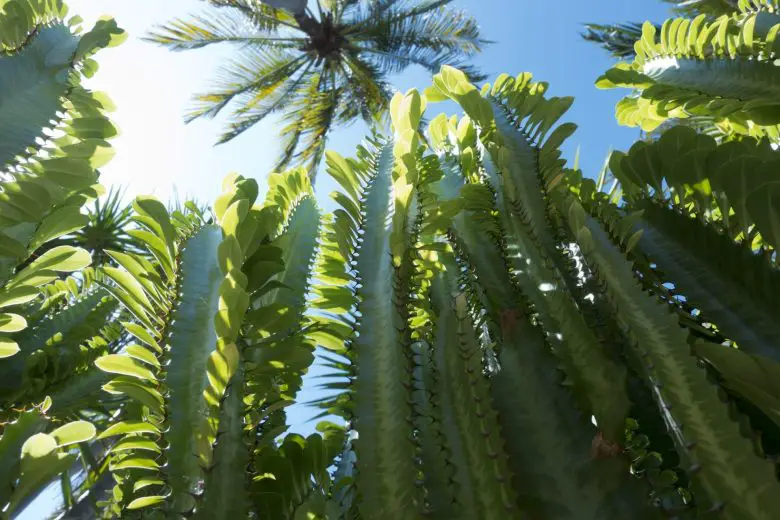
To ensure the health and prosperity of Euphorbia trigona inside homes, it is important to create optimal environmental conditions.
The plant requires a good amount of direct light for healthy growth. So make sure you place the plant in an area of the house that receives at least 6-8 hours of light a day. An ideal option may be a room with a window facing south or west.
This succulent plant tolerates a wide range of temperatures, but develops best between 18°C and 27°C. Avoid placing the plant near drafts or in areas prone to sudden changes in temperature, such as near exterior doors.
Euphorbia trigona comes from arid regions, so it tolerates the relatively low humidity found in homes well. Therefore, avoid placing the plant in areas with high humidity, such as bathrooms or kitchens. Furthermore, it is not recommended to spray the plant directly.
What is the best soil to grow Euphorbia cactus?
Euphorbia trigona thrives best in well-drained soil that mimics the conditions of its natural habitat. A Potting mix for succulent or cactus plants enriched with sand or perlite it is a great choice for this plant. The soil should have excellent drainage capacity to avoid water stagnation which could cause root rot. Sand or perlite added to the soil does this, helping to ensure that the roots don’t become submerged in water.
Also, it is advisable to add some organic material to the soil, such as earthworm humus or compostto improve the fertility and overall structure of the substrate.
When to Repot African Milk Plants?
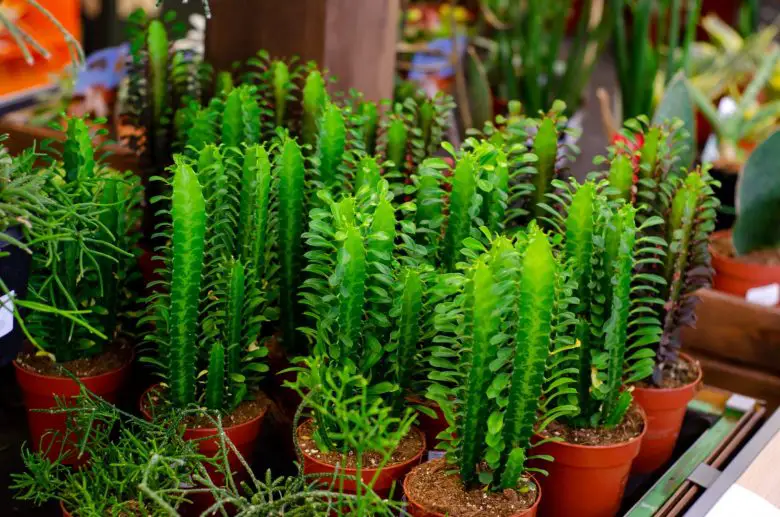
As far as repotting is concerned, Euphorbia trigona generally requires a change of container every 2-3 years. However, the exact timing will depend on the size of the plant and how fast it grows. When you notice that the roots have filled the pot completely and are starting to come out of the drainage holes or are forming aerial roots, it’s time to repot the plant into a slightly larger container.
It is best to repot in the spring or early summer when the plant is actively growing. Be sure to handle the plant carefully when repotting, as the toxic sap could cause irritation or an allergic reaction. Use protective gloves and work with care.
After repotting, let the plant acclimate for a few days without exposing it to intense direct sunlight, so that it can adapt to the new environment.
How does the African milk plant multiply?
Euphorbia trigona can be multiplied through several methods, including cutting and the division of suckers.
Propagation from cuttings is a common method of reproducing this succulent plant. To do this, cut a piece of healthy, mature stem from the mother plant. Let the cutting dry for a few days to allow the wound to heal and form a tough skin over the cut surface. Then, plant the cutting in well-drained soil as described above. Water moderately and place the cutting in a bright area, avoiding direct exposure to intense sunlight for the first few times. The cutting should root over the course of a few weeks and begin developing new shoots.
Euphorbia trigona plants occasionally produce suckers or lateral shoots from the base of the mother plant which, left to grow, give life to new stems. These suckers can instead be separated from the main plant and grown as new plants. To do this, carefully remove the suckers from the mother plant using a clean, sharp knife. Make sure each sucker has well-developed roots. Plant the suckers in separate pots with suitable soil and follow the same care instructions as for the adult plant.
When to water Euphorbia cactus?
Euphorbia trigona is a succulent plant that has adapted its vegetative structure to conserve water. It therefore requires less watering than other plants.
The general rule of thumb for watering is to let the soil dry completely between waterings. Before watering again, check that the soil is completely dry all the way down. Generally, the plant requires the suspension of irrigation during the winter months or when temperatures are cooler.
When it’s time to water, do it liberally, allowing the water to seep into the soil down to the very roots at the bottom of the pot. However, avoid leaving the plant in a saucer with stagnant water, as stagnation can cause root rot.
Importantly, Euphorbia trigona is more tolerant of under-watering than over-watering. Excessive watering can lead to problems such as stem loss of turgor.
Observe the plant closely and adjust your watering practices based on its responses.
How to prune a Euphorbia trigona plant?
Pruning Euphorbia trigona is an operation that requires caution due to the toxic sap present in the plant. Therefore, before starting pruning, wear resistant gloves and protective goggles to avoid accidental contact with the sap. Also be sure to work in a well-ventilated area.
Pruning the plant is often necessary to remove dead or damaged branches. Used a clean, sharp pair of shears to cut unwanted branches as close to the point of origin as possible, being careful not to damage surrounding healthy branches. Let the wound air dry for a few days to allow the lymph to seal the wound.
After pruning, clean the tools used with soap and water to remove any residual sap and prevent contamination of other plants.
In general, try to limit pruning on Euphorbia trigona to a minimum, the plant has a fascinating natural shape and can enjoy an attractive appearance even without frequent interventions.
What are the parasites that could attack this plant?
Euphorbia trigona is a rustic species and resistant to parasite attacks. The only ones who can scale insects infest it, insects that fix themselves on the stems, causing severe deterioration. To eliminate scale insects from plants it is possible to proceed with manual removal, using cotton balls soaked in water and potassium soap.
Toxicity and risks of Euphorbia trigona
As mentioned several times, Euphorbia trigona, like many other plants of the family Euphorbiaceaecontains a toxic sap. This sap is composed of a milky irritant, which can cause skin, eye and respiratory irritation.
The sap of the plant can cause irritation and dermatitis if it comes into direct contact with sensitive skin. Therefore, it is essential to wear protective gloves when handling the plant to avoid direct contact. In case of accidental skin contact, immediately rinse the affected area with soap and water.
Its sap can irritate the eyes. In case of contact with eyes, rinse thoroughly with clean water for at least 15 minutes and consult a doctor if irritation persists.
The sap is highly toxic if ingested. It is therefore essential to keep the plant out of the reach of children and pets.
Finally, the sap of the plant can also be irritating to the respiratory tract. During maintenance operations, it is therefore advisable to work in a well-ventilated area to minimize inhalation of particles. If you develop respiratory symptoms after exposure, you should seek medical attention.
Importantly, toxicity varies from person to person and reactions can be different.

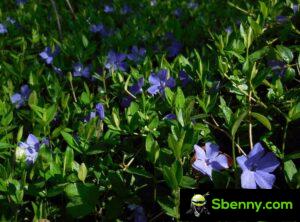
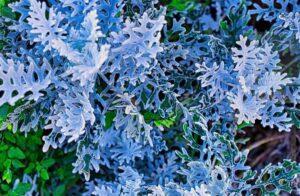
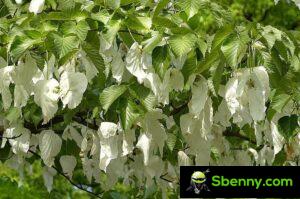
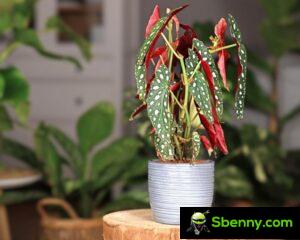
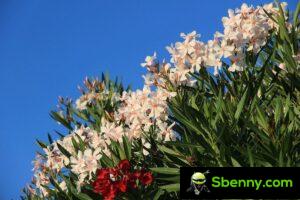
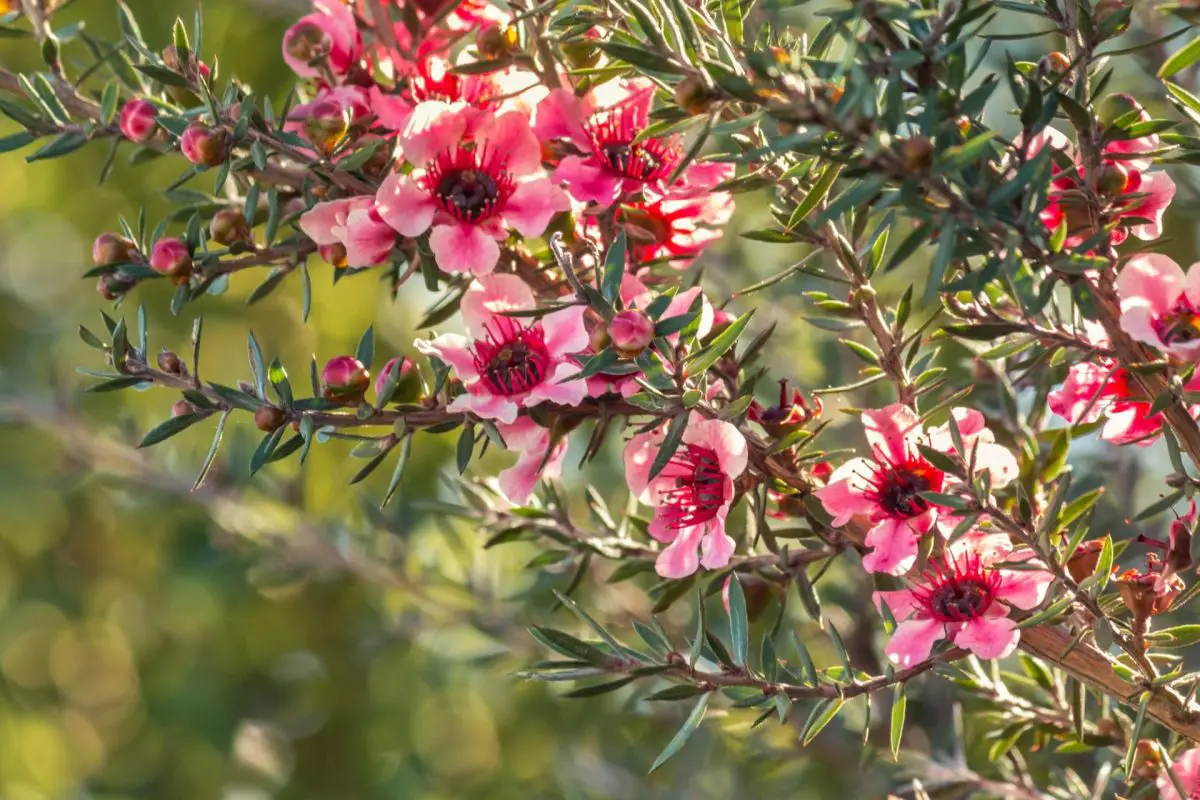
Start a new Thread